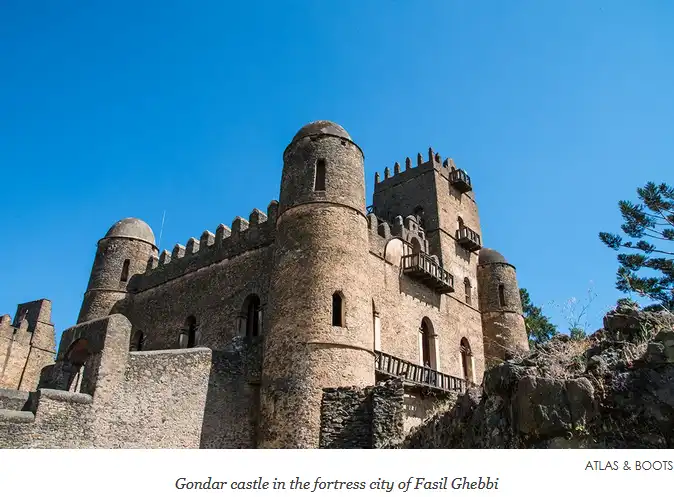The Vikings on Portuguese shores
As mostly everywhere else where they delved, perhaps with the exception of Iceland where they settled from around the middle of the second half of the 9th century[1], the Vikings have come to the West of the Iberian peninsula in the 9th to the 11th century – around the so-called Viking Age, which went from c.750 to 1050[2] -, but did not leave many, if any, direct vestiges, archaeological or otherwise.[3] Their incursions could be best described as pirate attacks, which did not go beyond short-lived settlements if at all.[4]
According to Peter Pentz (ibidem p.26) “plunder and pillage are the activities, to which the Vikings owe their reputation today. Starting a few years before 800, Northern ‘barbarians’ for three centuries swept into Europe, and even beyond, in waves of arson, plunders and murder. But today we know, not at least from archaeology, that there was much more to the Viking expansion than pillage and blood – the harsh description is the one given by the victimized of the time.” This seems to have been the case of the “well-known assault on the monastery of Lindisfarne, off the eastern coast of Yorkshire in 793.” (ibidem p.26)
Later in the 12th century, and already as converted Christians, they, or their descendants based in Western Europe, participated in the crusades, namely in the second one, which was partially diverted to share in the efforts to conquer Lisbon from Islamic domination in 1147.
[1] Anne-Christine Larsen “Dragons of the Sea. Ships, Conquest and Settlement in the Viking Age” in “Vikings. Warriors from the Sea”, Exhibition Catalog, Maritime Museum, Lisbon, 2017, p.79
[2] According to Peter Penz “Viking Age Denmark”, in “Vikings. Warriors from the Sea”, Exhibition Catalog, Maritime Museum, Lisbon, 2017, p.25.
[3] Hélio Pires “Os Vikings em Portugal e na Galiza. As incursões nórdicas medievais no ocidente ibérico”, Zéfiro, Sintra, 2017, p.21, 48-49, and 185
[4] ibid p.223 and 228.

“The Iberian Peninsula was included in Viking expansion, but so far the archaeological traces of Viking settlement here have been very limited, although a small cylindrical casket in the Mammen style from the second half of the 10th century has been found at San Isidoro in León.” (Anne-Christine Larsen “Dragons of the Sea. Ships, Conquest and Settlement in the Viking Age” in “Vikings. Warriors from the Sea”, Exhibition Catalog, Maritime Museum, Lisbon, 2017, p.59) Not very much to go by, I must add…
In this same vein and according to this same author (ibidem, p.78) “Throughout the Viking Age the Vikings retained their own language – Norn – in countries where they lived side by side with the native inhabitants. In some Viking migrant areas their language left little trace in the language of the original population, like Ireland where there were only 20 Norse words.”
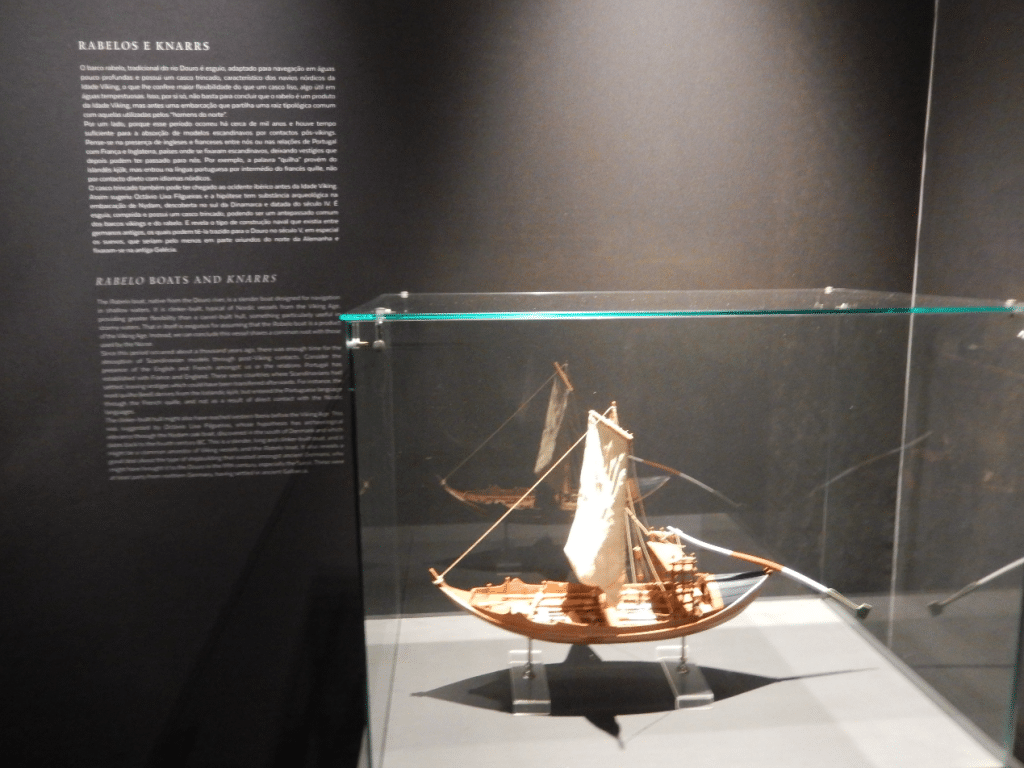
Octávio Lixa Filgueiras hypothesisis a Nordic origin for the rabelo boat still to be spotted on the river Douro. (“Entre Normandos e Árabes nas margens do Douro”, in Studium Generale, vol.10, Porto: Maranus, p.5-49) The rabelo boat is clinker-built, typical of Nordic Viking vessels, so-called knarrs.
Similar elaborations could eventually apply to the moliceiro boat, which can be found around Aveiro by the same name Vouga river mouth.
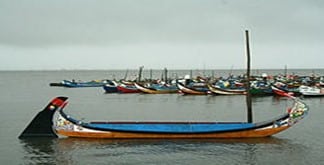
The following maps from Hélio Pires book can be used to find the most likely locations of Vikings’ incursions in the territory, which is nowadays Portugal and Galiza.

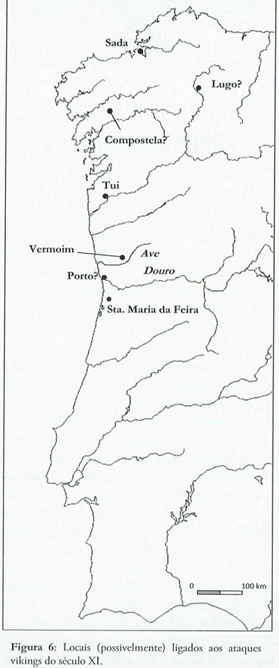
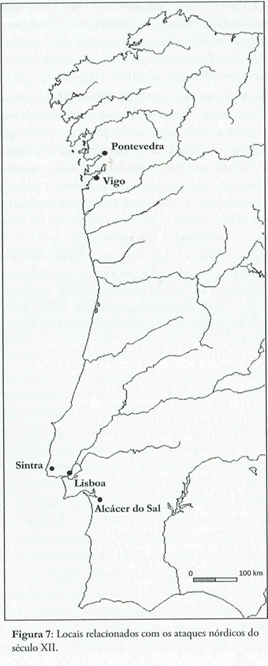
See more: Vikings

